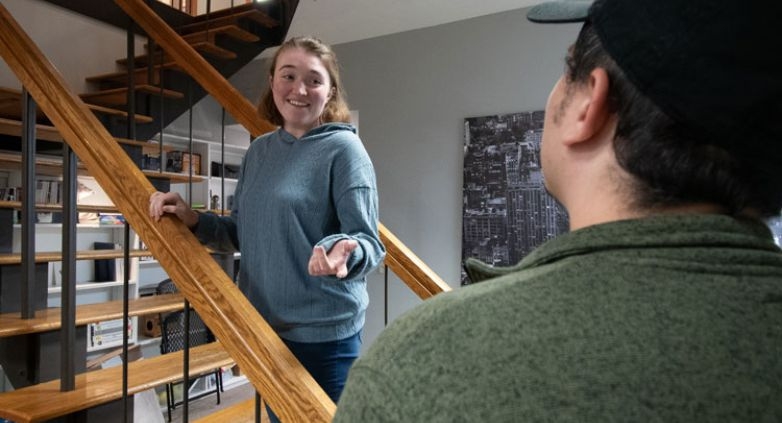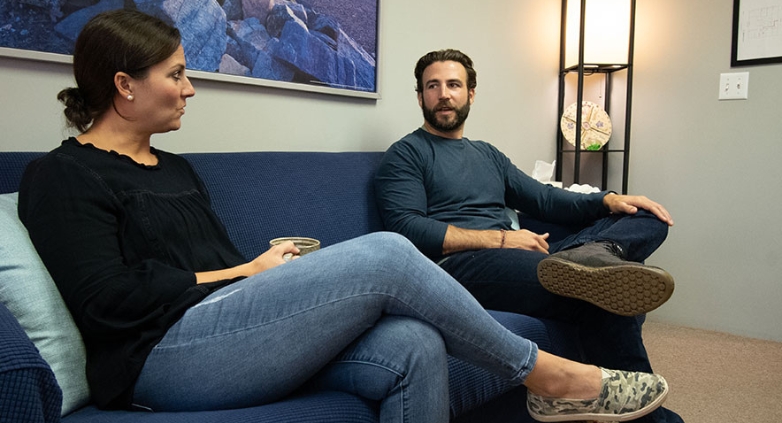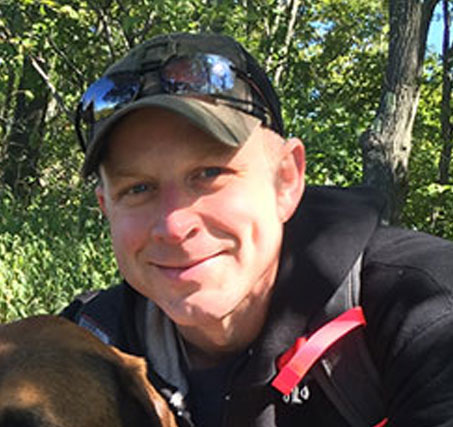
Boundaries in Addiction Recovery – Why They Matter
When someone begins the recovery journey, one of the most powerful, and often overlooked, tools for long-term success is the ability to set clear boundaries. Whether you’re in recovery yourself or supporting a loved one, boundaries in addiction recovery are essential for maintaining sobriety, protecting emotional well-being, and healing relationships.
What Are Boundaries in Addiction Recovery?
Boundaries in addiction recovery are the healthy physical, emotional, and relational limits individuals create to protect their sobriety, reduce stress, and promote balance. These boundaries can apply to time, space, emotions, or behavior, and they are crucial for rebuilding trust and structure during recovery.
Without boundaries, people in recovery, and their families, are more vulnerable to stress, burnout, and relapse. When done right, boundaries don’t create distance, they create safety.
What You’ll Learn in This Article:
- Understanding Boundaries in Recovery
- Why Boundaries Matter in Addiction Recovery
- Types of Boundaries in Recovery
- Setting Boundaries with Loved Ones in Recovery
- Boundaries for Families of Addicts
- Boundaries in Sobriety for Individuals
- Overcoming Guilt When Setting Boundaries
- Professional Support in Building Boundaries
- Case Studies from Real Families
- FAQs About Boundaries in Recovery
Read on to learn how setting and maintaining boundaries in addiction recovery can strengthen your relationships, protect your progress, and give you the freedom to heal.
Free Download
Proven Programs for Lasting Recovery
Receive your free guide to understanding alcohol addiction and discovering recovery programs tailored to you. Learn how to build a personal sobriety plan and get support every step of the way.
1. Understanding Boundaries in Recovery
Before you can set or maintain them, it’s important to understand what boundaries really mean in the context of addiction recovery.
What Are Boundaries in Recovery?
In recovery, boundaries are the limits individuals set to protect their sobriety, personal well-being, and emotional balance. These limits define what’s acceptable, and what’s not, in relationships, routines, and even self-talk. Setting boundaries helps you make choices that support healing, rather than repeating old patterns.
There are two major types of boundaries:
- Personal boundaries – Limits you set with yourself, like avoiding triggering situations or committing to therapy
- Relational boundaries – Limits you set with others, such as refusing to accept disrespect or emotional manipulation
Both types are vital in building a life where recovery can thrive. You can read more about how these dynamics affect loved ones in our article on Family Roles in Addiction.
Why Boundaries Can Feel Unfamiliar
For many people, especially those who’ve lived through addiction, or loved someone who has, boundary-setting can feel uncomfortable at first. You may have grown used to codependency, people-pleasing, or crisis-driven dynamics. But part of healing means relearning how to protect your space, your emotions, and your priorities, and that starts with boundaries.
In early recovery, things can feel uncertain. Relationships may be strained, guilt can be overwhelming, and the desire to “fix things” can lead to blurred lines. That’s why boundaries in addiction recovery aren’t about controlling others, they’re about creating safety for yourself and those around you.
Learn how to communicate boundaries in complex family dynamics by reading How Do I Talk to a Family Member About Their Addiction?
Boundaries vs. Ultimatums
It’s also important to distinguish boundaries from ultimatums.
- A boundary is about what you will do to take care of yourself.
Example: “If you come home intoxicated, I’ll leave the room to protect my peace.” - An ultimatum is about forcing someone else to change.
Example: “If you use it again, I’m leaving you forever.”
While boundaries can sometimes involve consequences, they’re rooted in self-respect and personal values, not control. Understanding this difference helps families and individuals avoid power struggles and build trust.
According to the National Institute on Drug Abuse (NIDA), long-term recovery involves rebuilding healthy routines and relationships, both of which rely heavily on clear, respectful boundaries.

2. Why Boundaries Matter in Addiction Recovery
Boundaries aren’t just about protecting yourself from chaos or confrontation, they’re fundamental to the healing process. In fact, without boundaries, addiction recovery can quickly become unstable, reactive, and emotionally overwhelming, for both the person in recovery and those around them.
Protecting Emotional Health
Recovery requires emotional clarity and stability, and boundaries are one of the best ways to support that. Without clear limits, people in recovery often feel overstimulated, manipulated, or overwhelmed by guilt and obligation.
For example, if a loved one constantly brings up the past or invades personal space, the person in recovery may feel unsafe, even in sobriety. Boundaries like “I’m not ready to talk about that” or “Please don’t come over without asking” protect mental health and reduce stress, which can trigger relapse if left unchecked.
Families, too, benefit from emotional boundaries. When you know how to limit over-involvement, you protect your own wellness and allow your loved one to take responsibility for their recovery.
Learn more about the emotional patterns that influence these dynamics in Family Roles in Addiction.
Preventing Relapse Triggers
One of the most overlooked benefits of boundaries in addiction recovery is their ability to reduce exposure to high-risk situations. Boundaries can include:
- Avoiding people who still use substances
- Declining invitations to parties or bars
- Asking loved ones not to drink around you
- Saying “no” to emotionally charged conversations during early recovery
These aren’t just preferences, they are protective mechanisms. According to SAMHSA, relapse prevention depends on developing routines and environments that support wellness, boundaries are part of that structure.
Supporting Long-Term Accountability
Boundaries also reinforce accountability, both internally and externally. When a person in recovery knows what is expected, and what they need, they can better manage their time, emotions, and behavior.
For families, boundaries encourage accountability as well. For instance, stating, “We’re happy to help with groceries, but we can’t give cash,” sends a clear message of support without enabling.
This form of structure is often reinforced in treatment settings like Intensive Outpatient Programs (IOP) or In-Home Recovery Services, where clients learn to communicate needs and limits. You can read how this support plays out in real time in our Group Therapy for Drug Addiction article.
Ultimately, boundaries in addiction recovery are not about pushing people away, they’re about making recovery sustainable. When boundaries are in place, there’s less confusion, fewer power struggles, and more space for growth, accountability, and healing.

3. Types of Boundaries in Recovery
Boundaries are not one-size-fits-all. In recovery, they show up in many forms, emotional, physical, relational, and even energetic. Understanding the different types of boundaries in addiction recovery helps individuals and families create a foundation of trust, safety, and stability.
Let’s take a closer look at the most important categories.
Emotional Boundaries
Emotional boundaries protect your inner world, your thoughts, feelings, and mental space. They define what kind of emotional energy you allow in and how much you’re willing to absorb from others.
Examples:
- “I’m not comfortable talking about that right now.”
- “I need time alone after therapy to process.”
These types of boundaries are especially important for people who are healing from trauma, guilt, or codependency and addiction recovery dynamics.
Families benefit from emotional boundaries, too. Instead of absorbing a loved one’s mood swings or emotional volatility, they can choose how to respond, not just react.
Want to understand how family therapy can support emotional boundaries? Read Family Therapy for Addiction to see how guided conversations can reduce tension and rebuild trust.

Physical Boundaries
Physical boundaries relate to your body, space, and environment. Recovery often involves relearning how to honor and protect physical needs.
Examples:
- “I need a quiet space in the house that’s just mine.”
- “Please don’t touch me when I’m upset.”
- “I can’t live with someone who’s actively using.”
These boundaries help reduce anxiety and prevent exposure to unsafe or triggering environments, a critical part of supporting recovery with boundaries.
Time and Energy Boundaries
These boundaries help individuals in recovery manage their schedule, rest, and commitments in a way that supports healing.
Examples:
- Blocking off time for therapy, exercise, or group meetings
- Saying no to late-night plans or draining obligations
- Limiting contact with people who constantly ask for help or attention
Time boundaries are especially helpful for avoiding burnout, a common risk for both people in recovery and their family members.
According to the American Psychological Association, recovery success is linked to routine and rhythm, which are only possible with protected time.
Relationship Boundaries
Boundaries in relationships after addiction are often the most difficult, and the most transformative. These involve reevaluating unhealthy patterns, deciding who stays in your life, and what roles they play.
Examples:
- Ending relationships that threaten sobriety
- Setting rules for communication, like “No yelling during arguments”
- Choosing to limit time with toxic or manipulative people
These are not punishments, they are recovery strategies. Without relational boundaries, it’s easy to fall back into enabling, guilt-driven behaviors, or emotional chaos.

4. Setting Boundaries with Loved Ones in Recovery
Whether you’re a parent, spouse, sibling, or close friend, one of the most important, and challenging, parts of supporting recovery is setting boundaries with loved ones. In early recovery, emotions run high and roles are often unclear. Boundaries offer a way to bring structure and safety back into the relationship.
Communicating Needs Clearly
Healthy boundaries don’t require conflict or confrontation. They require clarity. Instead of vague statements like, “I can’t handle this anymore,” try being specific:
- “If you miss your therapy appointments, I won’t be able to support your recovery financially.”
- “I can only talk when you’re sober and respectful.”
Clear communication reduces misunderstandings and gives your loved one a chance to take ownership. It also models respectful, direct dialogue, a skill many people in recovery are still developing.
Learn more about how to express these needs in How Do I Talk to a Family Member About Their Addiction?
Setting Boundaries Without Shame or Blame
Boundaries are not punishments. They’re tools for maintaining emotional health and creating the conditions where recovery can flourish. The tone you use when setting a boundary matters just as much as the content.
Use “I” statements like:
- “I need space right now to process everything.”
- “I want to support you, but not at the cost of my own mental health.”
Avoid framing boundaries as ultimatums or emotional leverage. According to SAMHSA’s guide to family involvement in recovery, using compassionate communication helps reinforce trust while still establishing structure.
Free Download
Proven Programs for Lasting Recovery
Receive your free guide to understanding alcohol addiction and discovering recovery programs tailored to you. Learn how to build a personal sobriety plan and get support every step of the way.
Breaking Cycles of Codependency
In many cases, families have unknowingly fallen into codependent patterns, trying to rescue, fix, or manage their loved one’s recovery. These behaviors, while well-intentioned, can lead to burnout and often enable substance use.
Examples of codependent behaviors to shift:
- Covering for missed work or appointments
- Giving money that may be misused
- Taking responsibility for their emotional state or choices
By setting firm, compassionate boundaries, you allow your loved one to experience the consequences that help drive change, and free yourself from the burden of control.
For more structured strategies, check out Family Therapy for Addiction, which outlines how guided support can help families break old patterns and build new, healthier ones.
Establishing boundaries in addiction recovery isn’t about distancing yourself from your loved one, it’s about creating a new framework where healing, respect, and trust can thrive. You don’t need to do it perfectly, just consistently and with care.
5. Boundaries for Families of Addicts
If you’re a parent, partner, or sibling of someone in recovery, you’ve likely wrestled with how to help without hurting, how to love without enabling. That’s where boundaries in addiction recovery become not just helpful, but absolutely necessary.
Setting boundaries is not about punishment or rejection. It’s about creating space for responsibility, healing, and mutual respect, for both your loved one and yourself.

How Families Can Support Without Enabling
When someone you care about is struggling with addiction or early recovery, it’s natural to want to protect them from pain. But enabling, taking over responsibilities, rescuing them from consequences, or ignoring harmful behaviors, often delays progress.
Here’s how to offer support without crossing the line into enabling:
- Instead of: giving money “just this once”
Try: offering food, transportation, or gift cards with limits - Instead of: covering up their mistakes at work or school
Try: encouraging them to take ownership and seek solutions - Instead of: ignoring substance use in your home
Try: enforcing a no-use policy and following through with action
These steps send a message: I love you, but I won’t support the behavior that’s hurting you, or us.
For more strategies on avoiding enabling, see What Resources Are Available for Families of Addicts?
Examples of Healthy Family Boundaries
Setting firm but compassionate boundaries helps clarify expectations and reduce emotional chaos. Here are some practical examples of boundaries in recovery for families:
- “We won’t allow substance use in the house.”
- “We’re happy to provide transportation to therapy, but not to social events where alcohol is involved.”
- “We can’t continue paying rent unless you’re actively in a recovery program.”
- “We need weekly check-ins if you want to keep staying here.”
Each of these examples reinforces accountability while showing support, a balance that’s often difficult, but essential.

When Rules Become Safety Nets
Boundaries may feel harsh at first, but they often become safety nets, structures that protect both parties from old patterns. They reduce conflict, clarify expectations, and create space for emotional repair.
For additional insight, read our article “Living With an Alcoholic”, which explores how to maintain your own well-being while supporting someone in recovery.
External Perspective Helps
According to the National Institute on Drug Abuse, long-term recovery outcomes improve significantly when families are involved, especially when they’re equipped with tools like boundary-setting, communication skills, and access to ongoing support.
Setting boundaries for families of addicts isn’t just a recovery tool, it’s a lifeline. For your loved one, it can mean structure and clarity. For you, it can mean peace and protection. Most importantly, it keeps love and support in the equation, without sacrificing your health.
6. Boundaries in Sobriety for Individuals
Sobriety is more than abstaining from substances, it’s about building a new life that supports healing, growth, and personal accountability. For that, boundaries in addiction recovery must become part of the daily routine.
For individuals in recovery, setting boundaries means learning how to say no, how to prioritize needs, and how to protect sobriety without apology.
Self-Care as a Boundary
One of the most overlooked forms of boundary-setting is self-care. Choosing to rest, seek support, or step back from stressful situations is a boundary in action.
Examples:
- Blocking off time for therapy or meetings
- Choosing not to engage in high-drama conversations
- Turning down social invitations that don’t align with your goals
Many individuals early in recovery feel guilty for putting themselves first. But doing so is necessary, not selfish. These are acts of self-respect and survival.
Learn how to support your routine by exploring Steps to Help Someone with Addiction, which includes self-care practices that aid long-term recovery.

Managing Relationships and Social Settings
One of the biggest threats to sobriety is pressure from old environments, toxic relationships, or peer groups that haven’t adjusted to your new lifestyle.
Examples of boundaries for protecting sobriety:
- “I can’t be around substances right now, even if you’re using responsibly.”
- “I’m only comfortable hanging out in sober settings.”
- “If our friendship continues to revolve around partying, I’ll need to take a step back.”
These statements are clear, respectful, and rooted in your personal commitment to recovery.
They also help you navigate boundaries in relationships after addiction, where expectations, trust, and dynamics have shifted. Not everyone will understand or support your boundaries, and that’s okay. Part of recovery is learning how to tolerate discomfort while still making the right choice for yourself.
Prioritizing Therapy and Ongoing Support
Recovery isn’t a one-time event. It’s a process, one that requires ongoing connection, reflection, and recalibration. Many individuals benefit from:
- Weekly therapy
- Group counseling
- Intensive Outpatient Programs (IOP)
- In-Home Recovery Services, which bring structure and support directly into their lives
These programs help reinforce boundaries by teaching communication skills, building structure, and creating a safe place to practice new behaviors.
Explore how Project Courage’s IOPs and home-based services support boundary development in real time through our Group Therapy for Drug Addiction article.
7. Overcoming Guilt When Setting Boundaries
For many people in recovery, and the families supporting them, setting boundaries feels uncomfortable. It can stir up feelings of guilt, fear, or self-doubt, especially when you’ve spent years trying to keep the peace or “hold things together.”
But here’s the truth: boundaries in addiction recovery aren’t about being cold or uncaring, they’re about being clear, healthy, and sustainable in your relationships.
Why Boundaries Are Not Selfish
Many individuals equate saying “no” with being mean, especially in families where emotional caretaking or people-pleasing was a survival skill. But setting a boundary is actually an act of love, for yourself and for others.
Healthy boundaries say: “I care enough about our relationship to protect it, and protect myself.”
They prevent resentment, burnout, and emotional buildup that often leads to conflict or relapse.
If you’re struggling with this guilt, you’re not alone. You might find it helpful to read Living With an Alcoholic, which discusses the emotional toll of constantly managing someone else’s behavior, and how boundaries can help restore balance.

How to Communicate Limits with Compassion
You can set strong boundaries while still being kind. It’s all about the delivery.
Try using statements like:
- “I love you, and I need to take care of myself by stepping back.”
- “I want to support your recovery, but I can’t do it at the expense of my mental health.”
- “I’m setting this boundary not to punish you, but to protect my peace, and give you space to grow.”
These kinds of statements invite mutual respect instead of defensiveness. They create room for conversation, not control.
According to the Therapy Aid Coalition, compassionate boundary-setting can reduce emotional tension and even strengthen relationships, especially when combined with ongoing counseling or group support.
Let Go of the Responsibility for Others’ Reactions
One of the hardest parts of setting boundaries is accepting that not everyone will respond positively. You may be met with anger, manipulation, or silence. That doesn’t mean your boundary was wrong, it means change is happening.
Your responsibility is to honor your truth and protect your recovery, not to manage how others feel about your decisions.
As you continue setting boundaries in addiction recovery, remember: boundaries are not rejection. They are an invitation to participate in the relationship in a healthier, more respectful way.

8. Professional Support in Building Boundaries
While setting boundaries on your own is possible, many people in recovery, and their families, benefit from guided support. Whether you’re struggling to say “no,” feeling overwhelmed by conflict, or unsure where to start, working with professionals can make the process clearer and more effective.
Why Guided Support Helps
Boundaries in addiction recovery are not always intuitive. That’s especially true if your relationships have been shaped by years of enabling, crisis management, or emotional avoidance.
Therapists, group facilitators, and recovery coaches are trained to:
- Help you identify where boundaries are lacking
- Teach healthy communication strategies
- Rebuild broken trust through consistent accountability
- Support emotional regulation when boundary-setting feels overwhelming
Group work can be particularly effective in helping people practice boundaries in a supportive environment. Learn more in Group Therapy for Drug Addiction, where individuals explore triggers, relational dynamics, and behavioral patterns in real time.

The Role of IOP and In-Home Recovery Services
Programs like Intensive Outpatient Programs (IOP) and In-Home Recovery Services offer structure, flexibility, and integrated support. These services don’t just focus on abstinence, they help clients build life skills, including how to establish and uphold boundaries with family, friends, employers, and even themselves.
At Project Courage, our IOP and in-home clients learn to:
- Communicate their needs and limits without guilt
- Respond to boundary violations without escalating conflict
- Build recovery plans that include self-care and boundaries
- Create personalized boundary agreements with family members
For individuals who need support at home or have barriers to attending a traditional program, in-home services offer direct coaching and therapeutic reinforcement, exactly where boundary struggles often happen.
You can also explore how modern formats like virtual addiction recovery programs provide flexible options for individuals and families who need accessible, real-time support for their recovery work.
External Validation and Ongoing Learning
According to SAMHSA, integrating family therapy into recovery improves outcomes, lowers relapse risk, and fosters long-term resilience, especially when boundaries and communication are key topics.
Professional guidance doesn’t just help you understand boundaries, it helps you maintain them through every stage of the recovery process.
Real Stories from Individuals and Families in Recovery
The journey through addiction recovery is deeply personal, but one thing is consistent: healing happens faster and deeper when clear boundaries are in place.
At Project Courage, we’ve seen how family involvement, boundary-setting, and flexible treatment options like In-Home Recovery Services and Intensive Outpatient Programs (IOP) create real, sustainable change.
These stories reflect a powerful truth: setting boundaries in addiction recovery is one of the most important tools for long-term success, and it works best when the whole support system is on board.
FAQs
Examples include not allowing substance use in your home, declining financial support unless they’re in treatment, or protecting your emotional space by avoiding triggering conversations.
Use calm, respectful language and “I” statements. Boundaries show care and protect relationships, not end them. Learn how in How Do I Talk to a Family Member About Their Addiction?
They help protect emotional health, avoid relapse triggers, and support structure, all vital parts of long-term recovery. NIDA
Set clear rules and stick to them: no enabling, no substance use in the home, and only offering support aligned with recovery goals. See What Resources Are Available for Families of Addicts?
Yes, they reduce triggers, increase accountability, and create a safe, structured environment, especially when combined with ongoing treatment.
Free Download
Proven Programs for Lasting Recovery
Receive your free guide to understanding alcohol addiction and discovering recovery programs tailored to you. Learn how to build a personal sobriety plan and get support every step of the way.
Conclusion: Boundaries Are the Backbone of Recovery
Boundaries in addiction recovery are not walls, they are bridges. They create space for healing, structure for growth, and clarity in relationships. Whether you’re supporting a loved one or navigating your own recovery, boundaries give you the tools to move forward, safely, confidently, and with purpose.
Setting boundaries can feel overwhelming, but you don’t have to do it alone. Project Courage offers In-Home Recovery Services and Intensive Outpatient Programs (IOP) designed to help individuals and families build healthier relationships through structure, support, and compassionate care. Contact us today to learn more about how we can support your recovery journey, at home, online, or in person.


